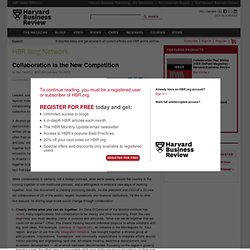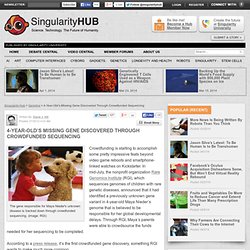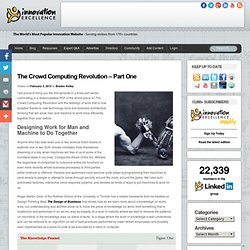

Tablets in the Industrial Environment. Tablets in the Industrial Environment. ECS - Crowdsourcing experts team up to accelerate cardiac response. Researchers from the University of Southampton will be collaborating with scientists from Masdar Institute, Massachusetts Institute of Technology (MIT), and the University of California, San Diego (UCSD) to tackle the MyHeartMap Challenge, using social network and crowdsourcing.

Launched today (Tuesday 31 January), by the University of Pennsylvania, MyHeartMap Challenge invites members of the public to participate by submitting geo-tagged pictures of automated external defibrillators (AEDs) they see around Philadelphia, to create an effective location database of AEDs. Masdar Institute’s computer scientists Dr Iyad Rahwan and Sohan D’Souza and University of Southampton computational game theorists James McInerney, Dr Victor Naroditskiy and Professor Nick Jennings, will join MIT Professor Sandy Pentland and UCSD Research Scientist Dr Manuel Cebrian, aiming to solve the MyHeartMap Challenge – and they are inviting social networkers to be involved in the activity.
Barclaycard US Introduces First Crowdsourced Credit Card Driven by Online Community of Cardmembers. 3 Reasons Crowdfunding Is Good For Investors. Summary The merits and risks of crowdfunding are being hotly debated.

The debate seems to focus on one primary issue: Will there be encouraging risk-adjusted returns for investors on crowdfunding platforms? There is no definitive answer to the question, just as no one today can predict whether investors in US public equities, or any asset class for that matter, will make money. Description Here are three reasons that a well-regulated crowdfunding platform may deliver attractive returns for investors: 1.
Crowdfunding reduces costs-- Crowdfunding is simply a term that allows investors to benefit from the efficiency gains provided by timely, transparent information. 2. 3. What’s Crowdsourcing Useful For? Memrise wants to turn learning into a 'recreational sport' Memrise's gardening visualisation helps its users to learn You'd be forgiven for being wary of anyone who talks about gamification, with the term having become a buzzword for a lot of people whose main talent is, well, spouting buzzwords.

But that doesn't apply to everyone. Ed Cooke is a Grand Master of Memory – a title awarded to people who prove they can memorise 1,000 random digits in an hour; the order of 10 decks of cards in an hour; and one deck of cards in under two minutes. His business partner Greg Detre has a PhD in neuroscience from Princeton. When the pair talk about "gamifying language learning", they're not messing about. Their company is called Memrise, and it was the first UK startup to graduate from the Techstars Boston incubator, before going on to raise $1.1m of seed funding from some prominent US investors in February 2012.
Crowdsourcing / Labor On Demand — CrowdFlower. What’s Crowdsourcing Useful For? How to Crowdsource. A Brief History of Crowdsourcing (Infographic) Editor's Note: The following infographic traces the chronology of crowdsourcing from the early 1700s through four centuries of innovation up to today.

It originally appeared in Ross Dawson's book "Getting Results from Crowds" and is reprinted with permission here. Click on the image below to get a full-sized view. In Chapter 2 of Getting Results From Crowds on The Rise of Crowdsourcing we included a Crowdsourcing Timeline, showing a selection of some of the important events in the world of crowds over the last couple of hundred years.Tapping crowds has a long and illustrious past, with of course an acceleration over the last 15 years as humanity has becoming connected, vastly broadening the scope of crowd participation.The image below is taken straight from a two-page spread in the book. Wired 14.06: The Rise of Crowdsourcing. Remember outsourcing?

Sending jobs to India and China is so 2003. The new pool of cheap labor: everyday people using their spare cycles to create content, solve problems, even do corporate R & D. By Jeff HowePage 1 of 4 next » 1. The Professional Story Tools Story Images Click thumbnails for full-size image: Claudia Menashe needed pictures of sick people. In October 2004, she ran across a stock photo collection by Mark Harmel, a freelance photographer living in Manhattan Beach, California. The National Health Museum has grand plans to occupy a spot on the National Mall in Washington by 2012, but for now it’s a fledgling institution with little money. After several weeks of back-and-forth, Menashe emailed Harmel to say that, regretfully, the deal was off. Wired 14.06: The Rise of Crowdsourcing. Pearltrees videos. NewCrowdSM4. Predicting Future Events Using Crowd-Sourcing. Foldit Gamers Solve AIDS Puzzle That Baffled Scientists. How amazing is this: Gamers playing a protein-folding game called Foldit have helped unlock the structure of an AIDS-related enzyme that the scientific community had been unable to unlock for a decade.

The solution represents a significant step forward in the quest to cure retroviral diseases like AIDS. AIDS, or acquired immunodeficiency syndrome, severely compromises the body’s cellular immunity, making sufferers dramatically less resistant to infection. It’s considered a global pandemic, infecting more than 33 million people worldwide, with nearly 3 million estimated to become infected and 2 million actually dying from it annually. Collaboration Is the New Competition - Ben Hecht. By Ben Hecht | 9:00 AM January 10, 2013 Leaders and organizations are acknowledging that even their best individual efforts can’t stack up against today’s complex and interconnected problems.

Collaboration Is the New Competition - Ben Hecht. CrowdSourcing.org. 4-Year-Old’s Missing Gene Discovered Through Crowdfunded Sequencing. The gene responsible for Maya Nieder's unknown disease is tracked down through crowdfunded sequencing.

(image: RGI) Crowdfunding is starting to accomplish some pretty impressive feats beyond video game reboots and smartphone-linked watches on Kickstarter. In mid-July, the nonprofit organization Rare Genomics Institute (RGI), which sequences genomes of children with rare genetic diseases, announced that it had identified a previously unknown gene variant in 4-year-old Maya Nieder’s genome that is believed to be responsible for her global developmental delays.
Through RGI, Maya’s parents were able to crowdsource the funds needed for her sequencing to be completed. According to a press release, it’s the first crowdfunded gene discovery, something RGI wants to make much more common. Maya’s developmental issues have caused her to be unable to speak or run and she has difficulty hearing. A promotional image from the Rare Genomics website. For years, institutions like St. Foldit Gamers Solve AIDS Puzzle That Baffled Scientists. Analytics. Crowdsourcing. The Crowd Computing Revolution – Part One. I am proud to bring you the first episode in a three part series culminating in a downloadable PDF of the whole piece on The Crowd Computing Revolution and the redesign of work that is now possible thanks to new technology tools and business architecture thinking that will allow man and machine to work more efficiently together than ever before.

Designing Work for Man and Machine to Do Together Anyone who has read even one or two science fiction books or watched one or two SciFi movies inevitably finds themselves dreaming of a day when machines will free of us of some of the mundane tasks in our lives. Companies dream of this too. Witness the eagerness of companies to outsource entire job functions (or even more recently whole business processes) to third parties either onshore or offshore.
Hackers and spammers have become quite adept at programming their machines to send emails to people or attempt to break through security around the clock, around the globe. Wait!